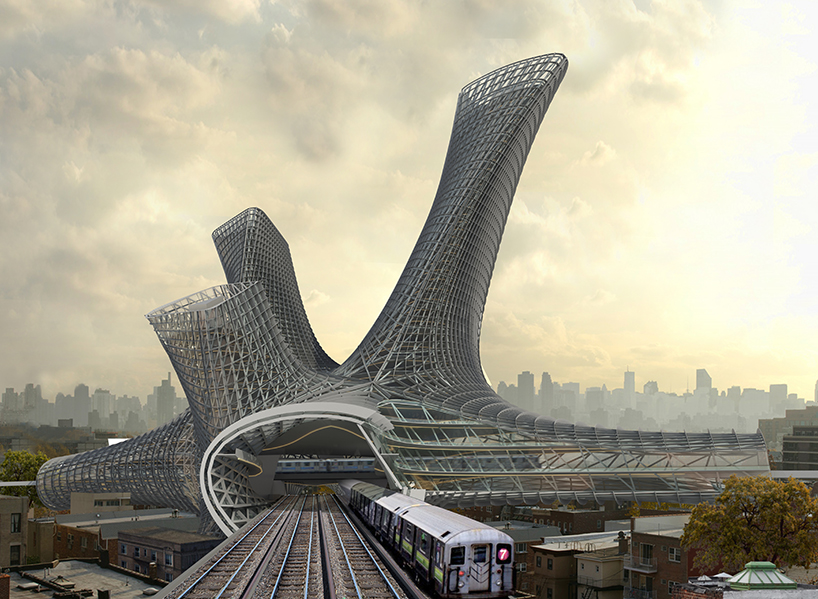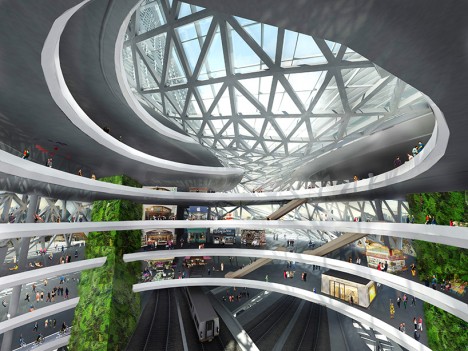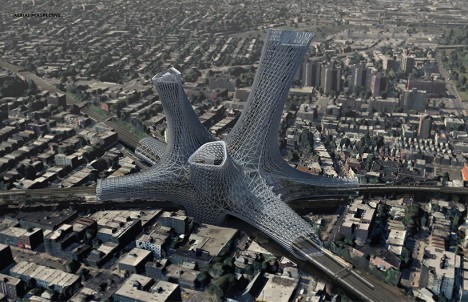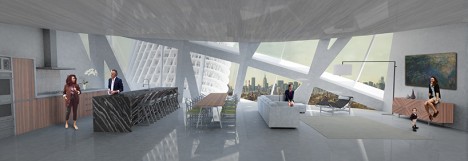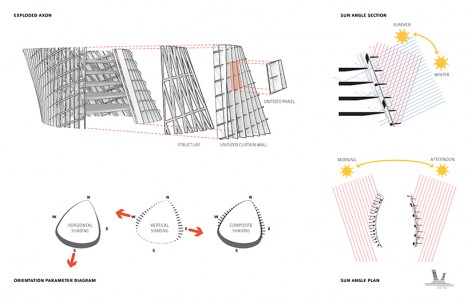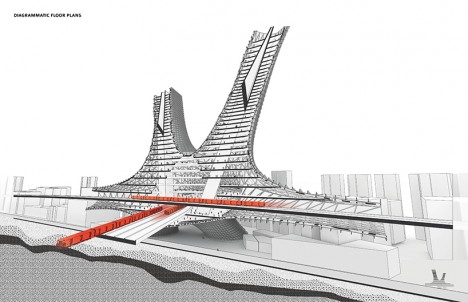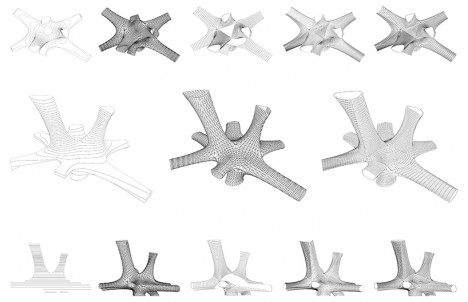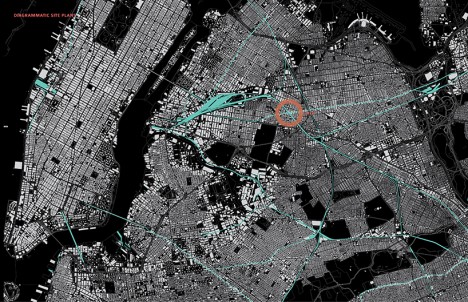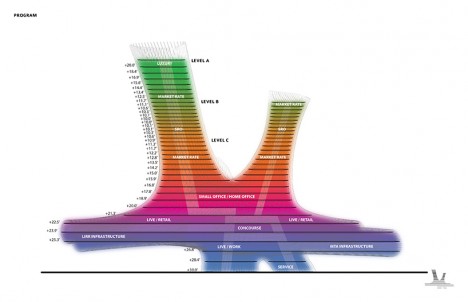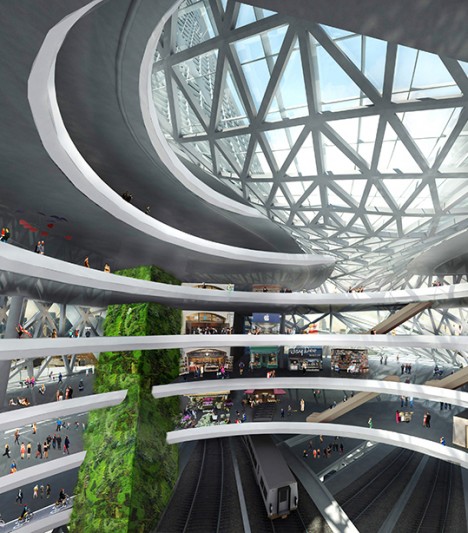Taking advantage of air rights above existing an transportation nexus, this design integrates elevated train lines, apartments, offices and shops to create a nodal point within NYC.
Chad Kellogg and Matt Bowles of AMLGM clad the building in a distinctive metal-and-glass skin, intended to be iconic as well as functionally flexible, adaptive and responsive.
The connective steel structural elements morph according to an algorithm to allow for larger openings or shaded sections as needed.
The vertical extrusions shoot upward using the same language as the horizontal connectors, entries and extensions that tie the building into the urban fabric.
The design is both oriented toward human occupation and contextually related to landscape of the surrounding city, operating effectively at multiple scales.
While similarly audacious large-scale, mixed-use projects have failed in the past, the density of NYC lends itself to such a compact, all-in-one approach.
From the designers: “A wide range of living conditions are offered within the one development. The programmatic options are set within a blend of floor plate geometries, transitioning from cylindrical to triangular from the base to the top of each tower. A composite or alloy of multiple flexible systems optimizes the skin so that each point has unique exposure, and is deployed on a grid that follows the direction of the surface.”
